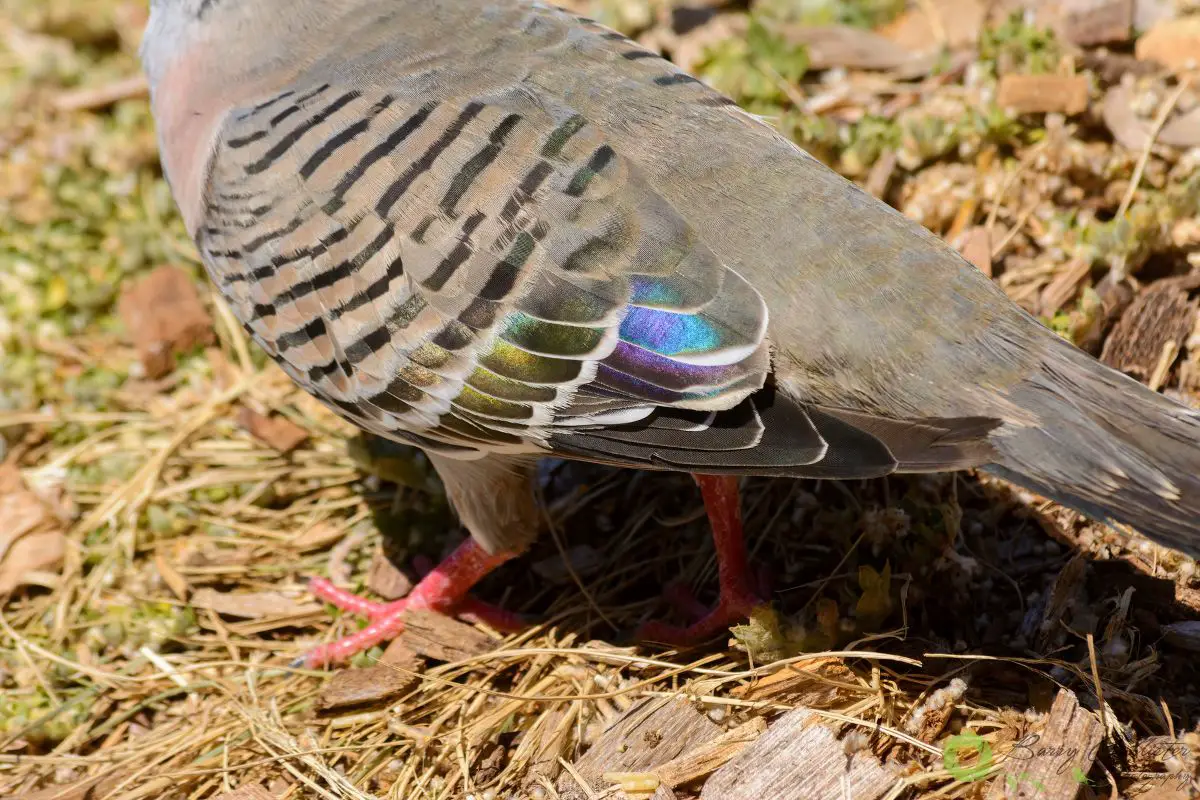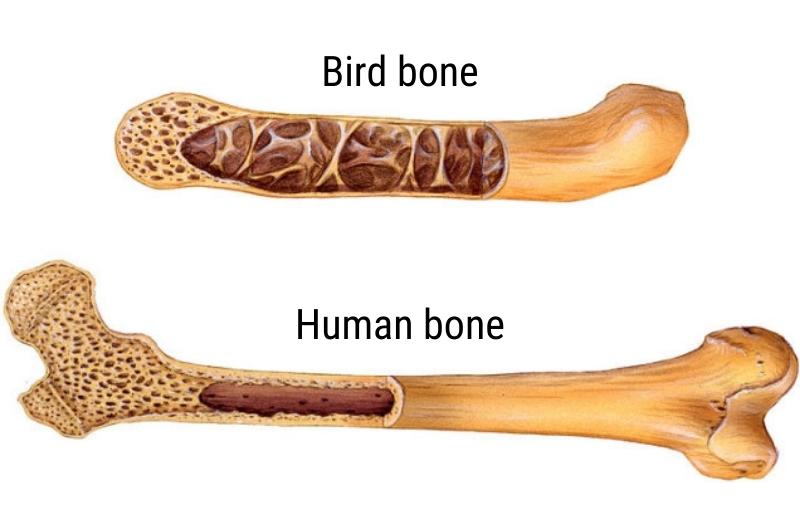It is estimated there are around 50 billion wild birds on the planet, that’s around 6.3 birds for every person?! There are not many places in the world you can go and not find a bird of some kind. We know they have wings but how many legs does a bird have?
Birds have two legs. Most also have four toes; three forward-facing and one backward-facing. They walk on their front toes (called digitigrade locomotion). The joint above their feet which we believe to be the knee is actually the ankle, their knees are hidden higher up the leg under their feathers.

Continue reading to learn a lot more about birds’ legs. We’ll look at their structure and answer other questions you may have about the legs of birds such as “why do birds stand on one leg?”
Learn how birds fly in this article here on my blog.
Do All Birds Have Two Legs?
All birds have two legs unless they have lost one for any reason. Birds may lose a leg in a predator attack; a fight with rival birds; by getting tangled in fishing wire; due to birth defects or from injuries received in everyday life. It’s also possible a bird may have had a leg amputated by a vet.

According to various dinosaur fossil findings such as Deinonychus and the famous Archaeopteryx (for a while considered to be the oldest known bird) among others, birds most definitely descended from dinosaurs.
In the mid-1960s, a paleontologist named John Ostrom discovered specimens of Deinonychus in southern Montana in the United States. Ostrom recognized many unique features that this animal shared with primitive birds such as Archaeopteryx.

Jonathan Chen, CC BY-SA 4.0 https://creativecommons.org/licenses/by-sa/4.0, via Wikimedia Commons
Other fossils found in China such as Anchiornis, Xiaotingia, and Aurornis show striking similarities to modern birds, including the presence of feather impressions in the skeleton, proving these dinosaurs had feathers.

Wang X., Pittman, M., Zheng X., Kaye, T.G., Falk, A.R., Hartman, S.A., and Xu X., CC BY 4.0 https://creativecommons.org/licenses/by/4.0, via Wikimedia Commons


All of these dinosaurs had two legs and two arms. Throughout the course of evolution, their arms gradually developed into wings.
These are the descendants of modern-day birds and the skeletal similarities are easy to see. Below we will compare the legs of a bird with our own and you will see how much they resemble the legs of dinosaurs.
Are birds related to Dinosaurs? Find out in this post here on my blog.
How Are Bird Legs Different From Our Own?


As you can see above, the legs of a bird are similar to our own legs in many ways though there are vast differences in the way the bones are situated.
Birds have a femur, fibula, and tibia as we do, though their tibia is called a Tibiotarsus.
They also have a patella or “knee” though it is not the joint that we see above their feet. That joint is actually their “ankle.” A bird’s knees are higher up its leg, hidden in its belly feathers.

Learn about the digestive systems of birds in this article.
The skeletal system of our legs is made for standing and walking in an upright position. The leg bones of a bird are designed for springing off of and landing on perches and also for catching prey in the case of predatory birds.
If you look at the image of Deinonychus above, you can see striking similarities in its leg structure to that of a bird. Even their hip bones and pubic bones are very similar.
Are Bird Legs Strong?
To us, birds appear fragile. They are small, light, and seem to be extremely delicate. This could not be further from the truth.
You have probably heard how birds have hollow bones as this makes them lighter and more able to fly. This is also not entirely true.

Yes, birds do indeed have hollow bones but they are no lighter than the bones of a similar-sized rodent. Their bones are hollow but they are reinforced to be stronger to handle the stresses of flight.

As you can see in the diagram above, the bones of a bird have inner “webbing” that strengthens them while keeping them relatively light.
It takes roughly 4000 Newtons of force to break a typical human femur.

Tests done by Andrew A. Biewener on the bone-bending strength of small mammals and birds show that bird bones are in fact able to bend more than human bones?!
So even though they are smaller and thinner than our bones, they are stronger relative to their size.
Meet the extraordinary flightless birds of Australia in this post here on the site.
Why Do Birds Stand On One Leg?
Something that birds do a lot of is stand on one leg. This is a signature trait in birds like Flamingoes so why do they do it?

Birds stand on one leg in order to stay warm. Lifting one leg up into their belly feathers reduces the heat loss through that unfeathered limb. Blood coming back up a bird’s leg is warmed by blood going to its feet so by tucking one leg up they are able to circulate more warm blood.
This is the equivalent of you or I crossing our arms when we are cold.

Birds are efficient creatures, they have to be in order to survive. Everything about them is designed for more effective movement, feeding, flight, or survival in their particular environment. Nature really does know what she’s doing.
References
- Bird – David Burnie
- Discovering Dinosaurs – Mark Norell
- How Bird Skeletons Have Adapted – rspb.org.uk
- How Much Force Does It Take To Break A Bone? – Ben Bowman for discovery.com

